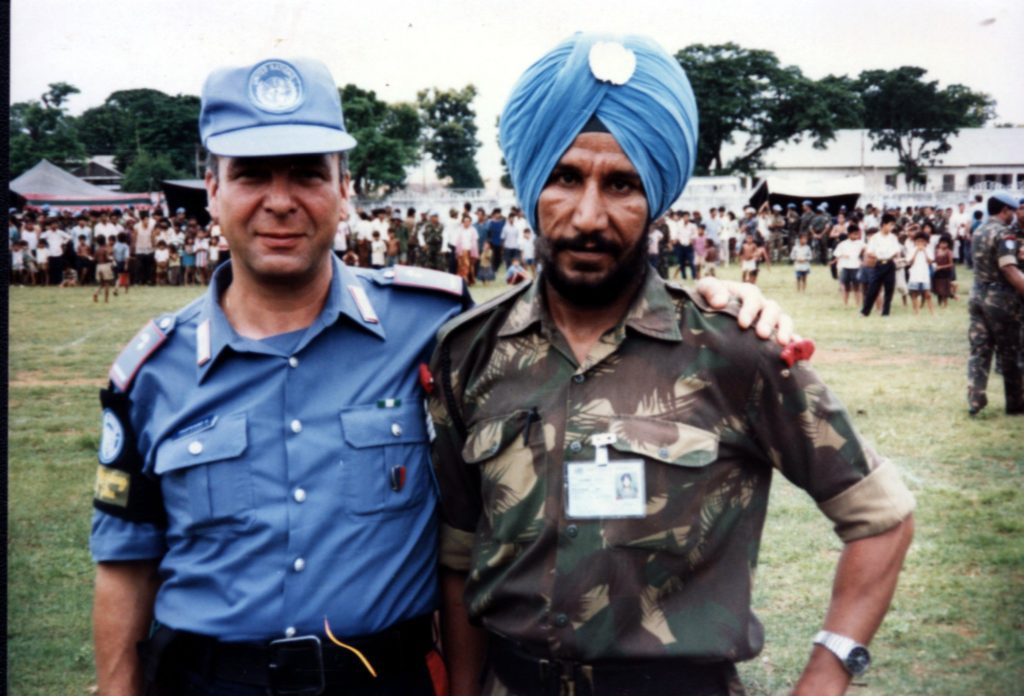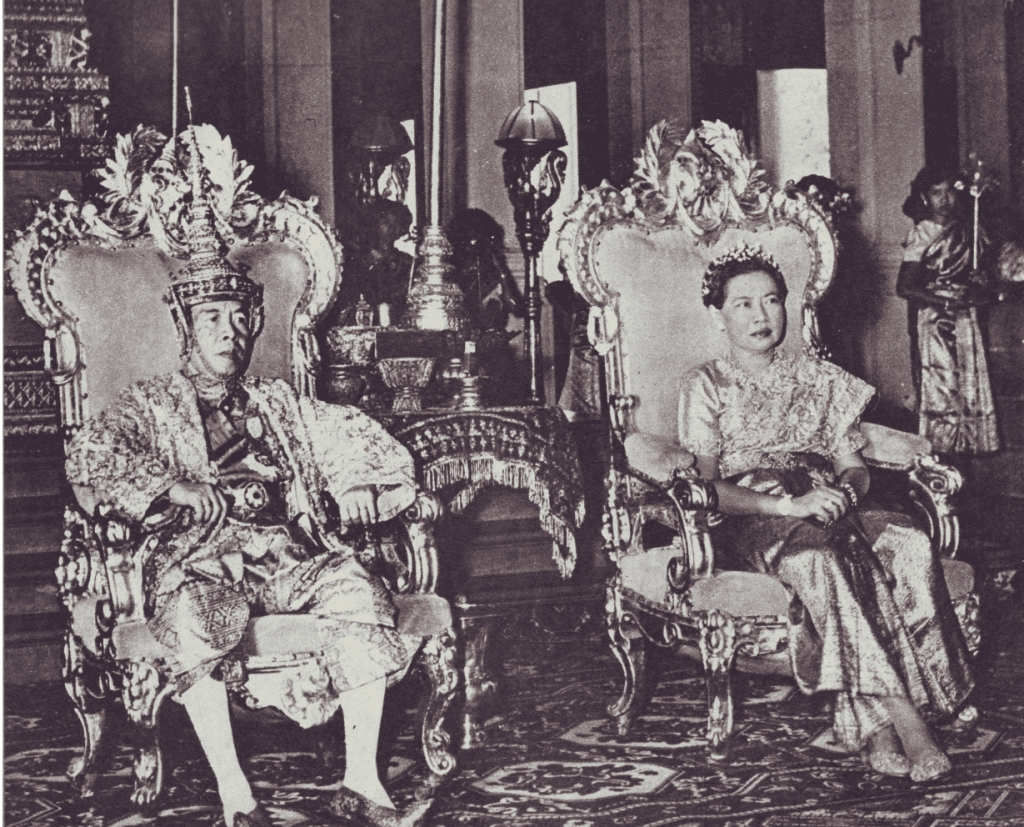On February 26, 1974, the Battle of Kampot began. Under the command of the infamous Ta Mok, the communists began a bombardment of the town, pounding it with 107mm rockets and 120mm mortar rounds. An estimated 1,500 FANK troops were inside the town, with 300 or so of the 210th and 68th Battalions deserting their posts in the first days of the battle.
On 26 February, 1949, Jean Léon François Marie de Raymond (b. 1907 – d. 1951) became the new Commissioner of the Republic in Cambodia. On October 29, 1951, Raymond was brutally murdered by his Vietnamese houseboy while he was taking a nap. The boy then managed to escape to the Việt Minh , who celebrated him as a hero. It is believed that the boy was placed as a spy in Raymond’s household by the Việt Minh from the very beginning, taking advantage of the inspector’s suspected pedophile tendencies.
On February 26, 1998, Catharin E. Dalpino of the Brookings Institution (a nonprofit public policy organization based in Washington, DC.) gave testimony over the issues facing the 1998 Cambodian election. READ HERE
On Friday, February 26, 1999, more than 5,000 FUNCINPEC royalist fighters who fought against Cambodian armed forces loyal to the CPP during the 1997 political violence officially rejoined a united military during a ceremony. The ceremony marked the final integration of the remaining royalist forces into the army. Thousands of Khmer Rouge fighters were also integrated as the guerrilla movement collapsed from mass defections.
On 27 February 1962, Nguyễn Văn Cử- a lieutenant in the South Vietnamese air force mutinied and bombed the South Vietnamese Presidential Palace bombing, aiming to assassinate South Vietnam’s President Ngô Đình Diệm and his immediate family, who were his political advisers. Cử managed to reach Cambodia safely, landing his AD-6 at Ponchentong, believing his attack had been successful. As a result, he gave reporters a press conference, telling them of the military’s hate for Diệm and his regime. Initially arrested by the police, Cử remained in exile in Cambodia where he worked as a language teacher. After Diệm’s assassination in November 1963, Cử returned from exile and resumed his service in the Air Force. Diệm and his family escaped unhurt, with three servants killed and thirty injured.
On February 27, 2018, the eighth amendment to the Cambodian Constitution was promulgated by Preah Reach Kram No. NS/RKM/0218/002- aiming to ‘promote the Khmer nation value in the cause of the protection of national independence, sovereignty and unity against external interference’.
On February 28, 1955, US Secretary of State (and 1954 Time Magazine’s ‘Man of the Year 1954’) John Foster Dulles met with King Sihanouk and senior Cambodian officials in Phnom Penh. They discussed, among other things, military aid. John’s younger brother, Allen Welsh Dulles, was also director of the CIA.

On February 28, 1992, UN Transitional Authority in Cambodia (UNTAC) was established by Security Council resolution 745 (1992), to ensure the implementation of the Agreements on a Comprehensive Political Settlement of the Cambodia Conflict, signed in Paris on 23 October 1991.

On February 29, 1956, Oum Chheang Sun stepped down as Prime Minister. He had taken the post from Norodom Sihanouk on January 1. Prince Sihanouk then reclaimed the position for the 6th time, until stepping down again a few weeks later on April 3.

On March 2, 1955, King Sihanouk abdicated in favor of his father, Norodom Suramarit.

On March 2, 2014, Rithy Panh’s The Missing Picture was one of the nominees for ‘Best Foreign Language category at the 86th Academy Awards. The movie lost out to Paolo Sorrentino’s Italian language film The Great Beauty /La grande bellezza.
On March 3, 2015, the International CIJ charged former Khmer Rouge cadre Im Chaem in absentia with homicide, as a violation of the 1956 Cambodian Penal Code, as well as the crimes against humanity of murder, extermination, enslavement, imprisonment, persecution on political grounds, and other inhumane acts allegedly committed at various security centres and worksites. The National Co-Investigating Judge elected not to charge Im Chaem, asserting that she did not fall within the jurisdiction of the Court.
On March 4, 1835, Queen Ang Mey (b. 1815 – d. 1875) took the throne for the first time. She reigned until June 1840, and again for a brief period in 1844-45. *Other sources say her reign began in January- which is when her father Ang Chan II died.

On March 4, 1999, amendments were made to the 1993 Cambodian Constitution.
